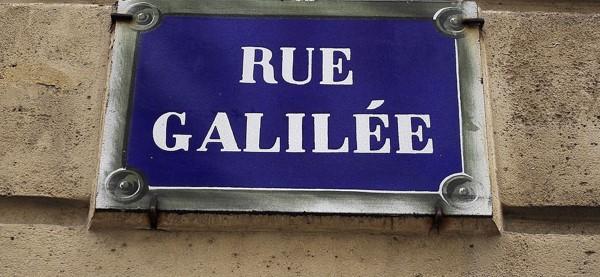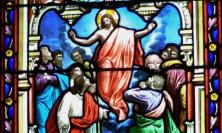After the discovery of the empty tomb, the disciples had only one instruction to follow in the midst of their fear and uncertainty: go to Galilee. That is still an instruction to us today, says Brian Purfield, because we are in the same place as the disciples: ‘This is where we live: after the resurrection but before the return, entrusted with a message that is wonderful, but the import of which we do not quite understand.’ Where is our Galilee, and how do we get there?
As a general rule, the gospels end on a note of triumph. In the popular imagination, at least, the gospels end as the faithful women trudge in darkness to the garden where, in Zeffirelli-like fashion, brilliant light and a blonde-haired angel emerge from the tomb to say that everything is going to be all right.
Mark’s Gospel, however, ends on a rather more sombre and subdued note. The last words of Mark’s Gospel are, ‘for they were afraid’ (Mk 16:8).[1] Yes, the stone is rolled back and there is an angelic messenger. But no risen Jesus, no lakeside barbecue, no traveller on the road who stays for supper, no mysterious gardener who knows our name. Only the message that Jesus is resurrected, the command to tell Peter and the others to go back to Galilee, and three terrified women who may or may not tell anybody anything.
The fact is, Mark 16:8 is exactly the right ending for this gospel, written as it was for Christians under persecution who were themselves faced with martyrdom, and focusing as it does on the cross. It is the right ending for us, too. This is where we live: after the resurrection but before the return, entrusted with a message that is wonderful, but the import of which we do not quite understand. If we are honest with ourselves, Mark 16:6-8 is the space most of us inhabit.
But he said to them, ‘Do not be alarmed; you are looking for Jesus of Nazareth, who was crucified. He has been raised; he is not here. Look, there is the place they laid him. But go, tell his disciples and Peter that he is going ahead of you to Galilee; there you will see him, just as he told you.’ So they went out and fled from the tomb, for terror and amazement had seized them; and they said nothing to anyone, for they were afraid.
In a similar fashion, Matthew’s account of the good news of the resurrection of Jesus Christ (Mt 28:1-10) begins with the journey of the women to the tomb at dawn on the day after the Sabbath. They go to the tomb to honour the body of the Lord, but, as in Mark, they are met by an angel who says to them: ‘Do not be afraid!’ (Mt 28:5) and orders them to go and tell the disciples, ‘He has been raised from the dead, and indeed he is going ahead of you to Galilee’ (Mt 28:7). At this point, Matthew elaborates on the Marcan account. Matthew, like Mark, says that the women quickly depart, but he adds that on the way Jesus himself meets the women and says, ‘Do not fear, go and tell my brothers to go to Galilee, there they will see me’ (Mt 28:10). ‘Do not be afraid’, ‘do not fear’: these are words of encouragement to open their (our) hearts to receive the message.
‘I will go before you to Galilee.’ With these words, we are also meant to recall where we last saw the disciples – back in Gethsemane (Mk 14:28; Mt 26:32). On that occasion, they ‘all abandoned him and fled’, after they had so enthusiastically joined in Peter’s protests of loyalty (Mk 14:29-31; Mt 26:33-35). It seems they are forgiven; and so is Peter who, the last time we saw him (Mk 14:66-72), was swearing that he had no idea who Jesus of Nazareth might be. The message Jesus gave them at that time was: ‘You will all fall away…but after I am raised up, I will go before you to Galilee,’ (Mk 14:27-28; Mt 26:31-32). At that time, however, their minds were on other things, and they had clearly not taken it in.
After the death of the Master, the disciples had scattered; their faith had been shaken, everything seemed over, all their certainties had crumbled and their hopes had died. But now the message of the women, incredible as it was, came to them like a ray of light in the darkness. The news spread: Jesus is risen, as he said! And then there was his command to go to Galilee; the women in Matthew’s account heard it twice, first from the angel and then from Jesus himself: ‘Let them go to Galilee; there they will see me.’ ‘Do not fear’ and ‘go to Galilee.’ These words indicate how the disciples are to discern the way ahead after the Passion, Death and Resurrection of the Lord.
What is the significance of returning to Galilee? Galilee is the place where everything began. They are to return there, to return to the place where they were first called. In Galilee, Jesus had walked along the shores of the lake as the fishermen were casting their nets. There he had called them, and there they had left everything and followed him (Mk 1:16-20; Mt 4:18-22).
To return to Galilee means to reread everything on the basis of the cross and its victory, fearlessly: ‘Do not be afraid.’ To reread everything – Jesus’s preaching, his miracles, the new community, the excitement and the defections, even the betrayal – starting from the end, which is a new beginning, from this supreme act of love.
Twice the women are told to tell the disciples to go to Galilee where they will meet Jesus for themselves. The women do as they are asked and the disciples set out for Galilee. What a desolate journey that must have been for them. Believing the extraordinary story of Mary Magdalene and her companions, the disciples set out in fear of their lives, and in the hope of seeing Jesus raised from the dead. There were no reassurances from anyone’s previous experience. No guidebooks or instructions about what to look for at the end. Not even a promise from Jesus, himself. Just an instruction, ‘Then go quickly and tell his disciples, “He has been raised from the dead, and indeed he is going ahead of you to Galilee; there you will see him.”’ (Mt 28:7).
The idea of the Easter journey being about new sight and insight is a rich one. In this respect, we may recall the beautiful Lucan account (Lk 24:13-35) of the two disciples on the road to Emmaus and their encounter with the Risen Lord, and how their eyes were gradually opened to recognise the Lord’s presence in their midst. But each of the disciples has a journey to make in this regard.
Every Good Friday, we listen to John’s account of the Passion being proclaimed. During the narration, several questions are asked: ‘Who are you looking for?’ (Jn 18:4, 7), ‘Aren’t you another of that man’s disciples?’ (Jn 18:25) and ‘What charge do you bring against this man?’ (Jn 18:29). The fact that the middle of those three questions is addressed to Peter is interesting. Although Peter wanted to remain faithful to Jesus, fear got the better of him. Most of us can feel for him. Faced with a choice between cutting and running on the one hand and possible death on the other, how many of us would choose death? How many of us would make the choice of Lieutenant Colonel Arnaud Beltrame, who recently volunteered to take the place of a hostage during a terror attack at a French supermarket and subsequently lost his life after being shot three times? Because actions always speak louder than words, every time we compromise the goodness of God within us, or work to undermine another person’s rights to dignity and life, we join Peter around the fire denying that we are Christ’s disciple. But the hapless, fickle and impulsive Peter found his way to Galilee and that is where his discipleship began to come into its own. Some of us need a while for the Risen Christ’s call to settle and mature, as well as some space to reflect upon the choices that have brought us to this moment. Then we can see which choices might lead us to see greater days ahead.
For each of us, too, there is a ‘Galilee’ at the start of our journey with Jesus. ‘Go to Galilee’ means rediscovering our baptism as a living spring, drawing new energy from the sources of our faith and our Christian experience. To return to Galilee means, above all, to return to that blazing light with which God’s grace touched me at the start of the journey.
In the life of every Christian, after baptism there is also another ‘Galilee’: the experience of a personal encounter with Jesus Christ who called me to follow him and to share in his mission. In this sense, returning to Galilee means treasuring in my heart the living memory of that call, when Jesus passed my way, gazed at me with mercy, and asked me to follow him. To return there means reviving the memory of that moment when his eyes met mine, the moment when he made me realise that he loved me.
The experience of a personal encounter with Jesus Christ is at the heart of Pope Francis’ Apostolic Exhortation, Evangelii Gaudium – ‘The Joy of the Gospel’.[2] The pope begins with a challenge:
I invite all Christians everywhere, at this very moment, to a renewed personal encounter with Jesus Christ, or at least an openness to letting him encounter them; I ask all of you to do this unfailingly each day.[3]
Where is my Galilee? Galilee does not have to be a place for us. It is a situation, a frame of mind, or a choice we make. Our particular Galilee could be the desolate journey of physical, emotional, sexual or spiritual pain. It could be dashed promises, broken relationships, or unrealised hopes. It may simply be the unremarkable circumstances of our everyday lives. Whatever it is, the joy-filled and hope-filled message of Easter is the promise made to us that Christ is not only there when we arrive, he has gone ahead of us, to that desolate place, so that we might have loving arms in which to fall at journey’s end.
There the Lord is waiting for you. Do not be afraid, do not fear, return to Galilee! The gospel is very clear: we need to go back there, to see Jesus risen and to become witnesses of his resurrection. This is not to go back in time; it is not a kind of nostalgia. It is returning to our first love, in order to receive the fire that Jesus has kindled in the world and to bring that fire to all people, to the very ends of the earth. Go back to Galilee, without fear!
Brian Purfield is a member of the Mount Street Jesuit Centre team and teaches short courses in theology.
[1] There are two endings to Mark’s Gospel, a longer (Mk 16:9-20) and a shorter ending (Mk 16:1-8). The longer ending is so different from the rest of the gospel in style that few scholars are convinced that it is original to the gospel.
[2] Pope Francis, Evangelii Gaudium (2013).
[3] Evangelii Gaudium, §3.






